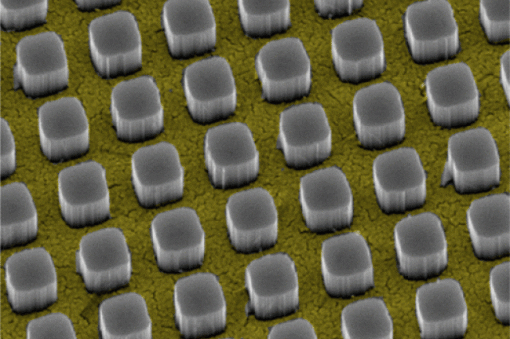 Researchers in the US have figured out how to make solar cells absorb significantly more sunlight than they previously could by making the tiny wires that lie across the top of solar cells effectively invisible.
Researchers in the US have figured out how to make solar cells absorb significantly more sunlight than they previously could by making the tiny wires that lie across the top of solar cells effectively invisible.
Conventional solar cells are panels with a square grid of wires interlaced over the top of them. These wires are necessary to conduct the electrical charge absorbed by the cell, but while they might not look like they’re really blocking the cell’s capacity to absorb sunlight, in reality they are – obstructing 5–10 percent of the light that would otherwise hit the cell. If only you could make those wires… disappear? Well, it seems that we can.
“Using nanotechnology, we have developed a novel way to make the upper metal contact nearly invisible to incoming light,” said one of the researchers, Vijay Narasimhan from Stanford University. “Our new technique could significantly improve the efficiency and thereby lower the cost of solar cells.”
Instead of using conventional wires, the team developed a method whereby a 16-nanometre-thick film of gold could be placed on a flat sheet of silicon. Riddled with an array of nano-sized holes, the film can be permeated by a matching array of silicon nanopillars, which jut through the metallic layer.
“We immersed the silicon and the perforated gold film together in a solution of hydrofluoric acid and hydrogen peroxide,” said one of the team, Thomas Hymel. “The gold film immediately began sinking into the silicon substrate, and silicon nanopillars began popping up through the holes in the film.”
The advantage of the nanopillars, which grow to a height of 330 nanometres, is that they reach up through the reflective metal surface and funnel light – and thus, energy – down into the silicon substrate underneath.
This system, which is described in ACS Nano, may not technically constitute invisibility, but the end result – redirecting light through metal – is almost the same, at least from an energy gains standpoint.
And those gains are considerable. “In our best design, nearly two-thirds of the surface can be covered with metal, yet the reflection loss is only 3 percent,” said Narasimhan. “Having that much metal could increase conductivity and make the cell far more efficient at converting light to electricity.”
With expectations that their nano-wire sheeting could boost the efficiency of conventional solar cells from 20 to 22 percent, the researchers plan to test the design on a working cell to see how it performs in the real world.
“We call them ‘covert contacts,’ because the metal hides in the shadows of the silicon nanopillars,” said graduate student Ruby Lai. “It doesn’t matter what type of metal you put in there. It will be nearly invisible to incoming light.”



